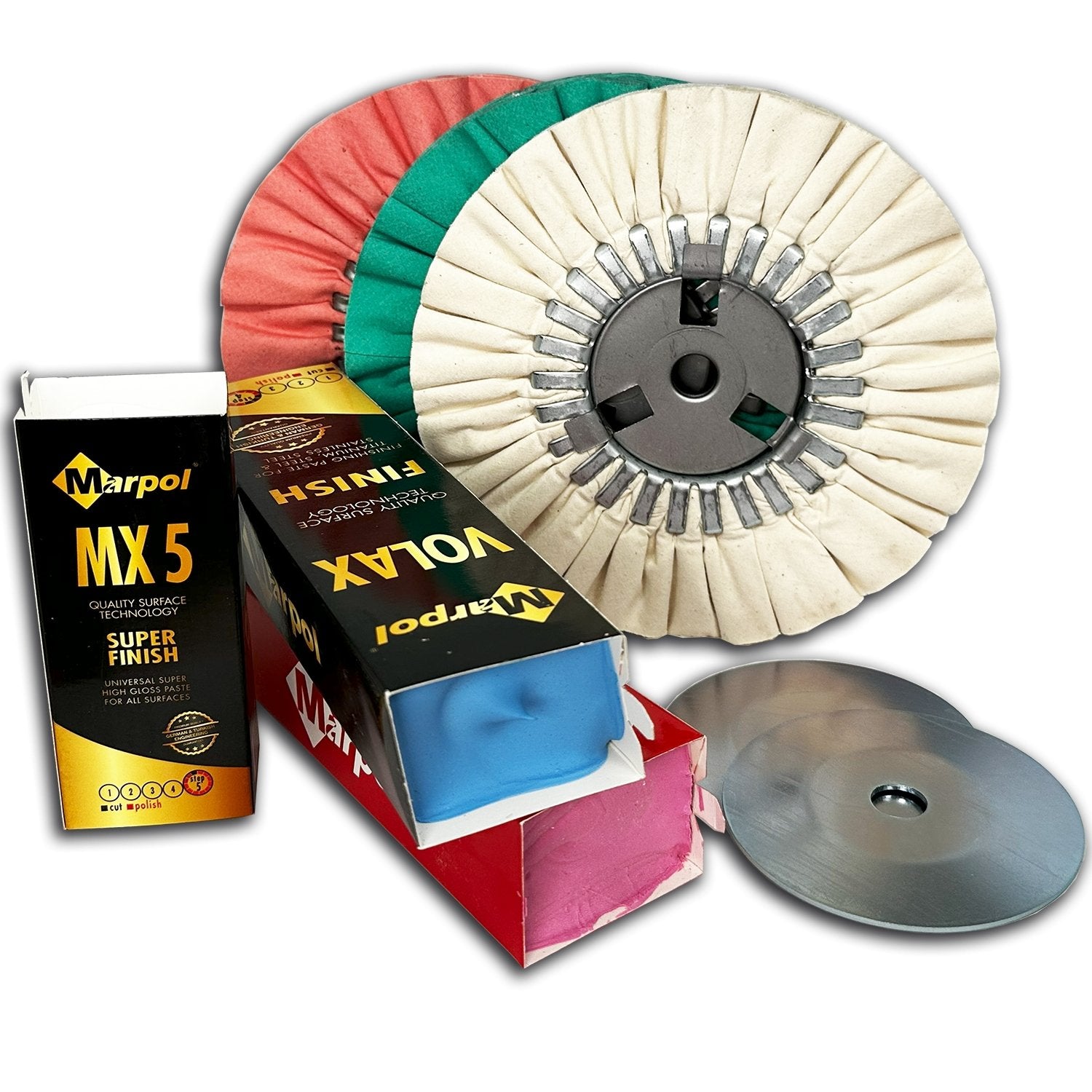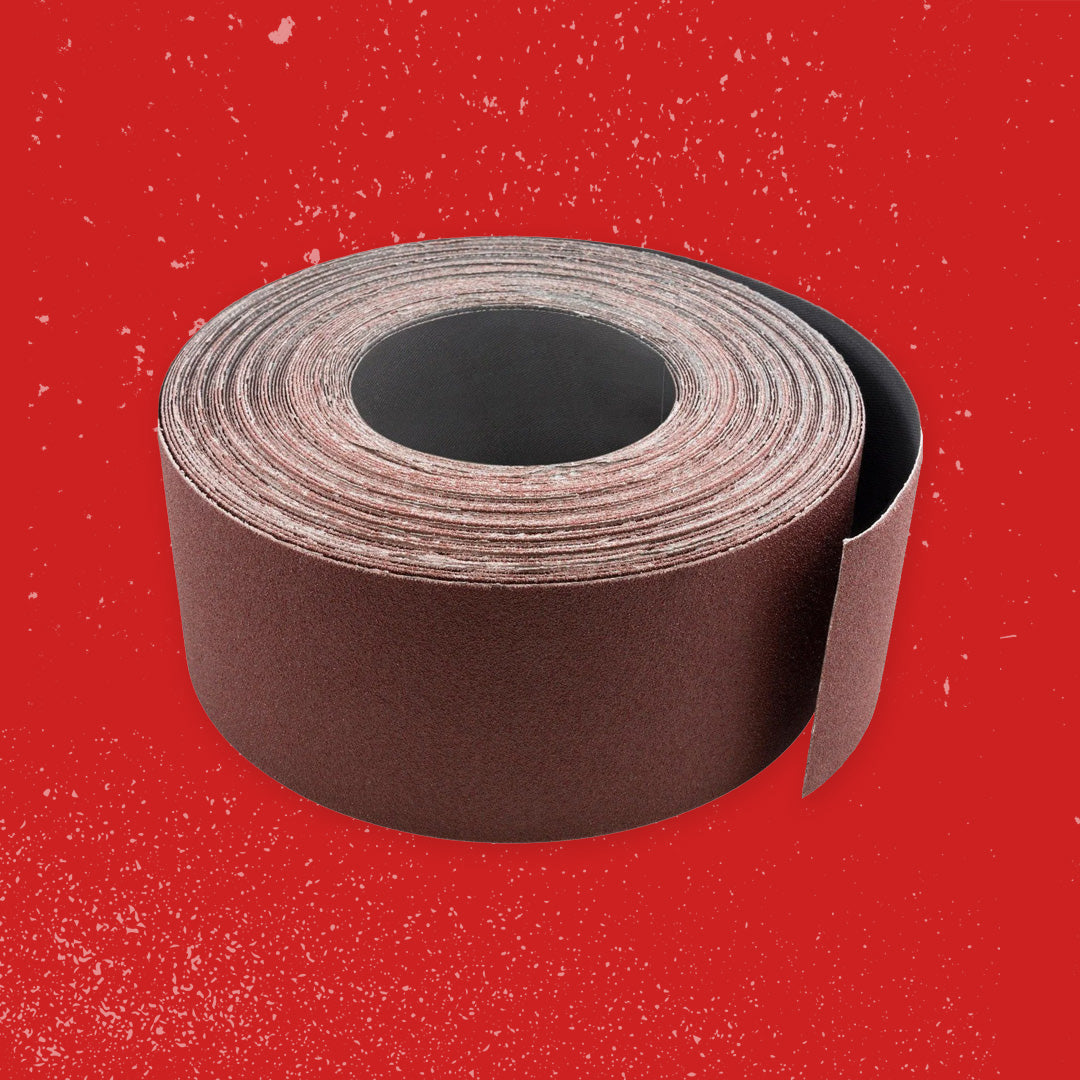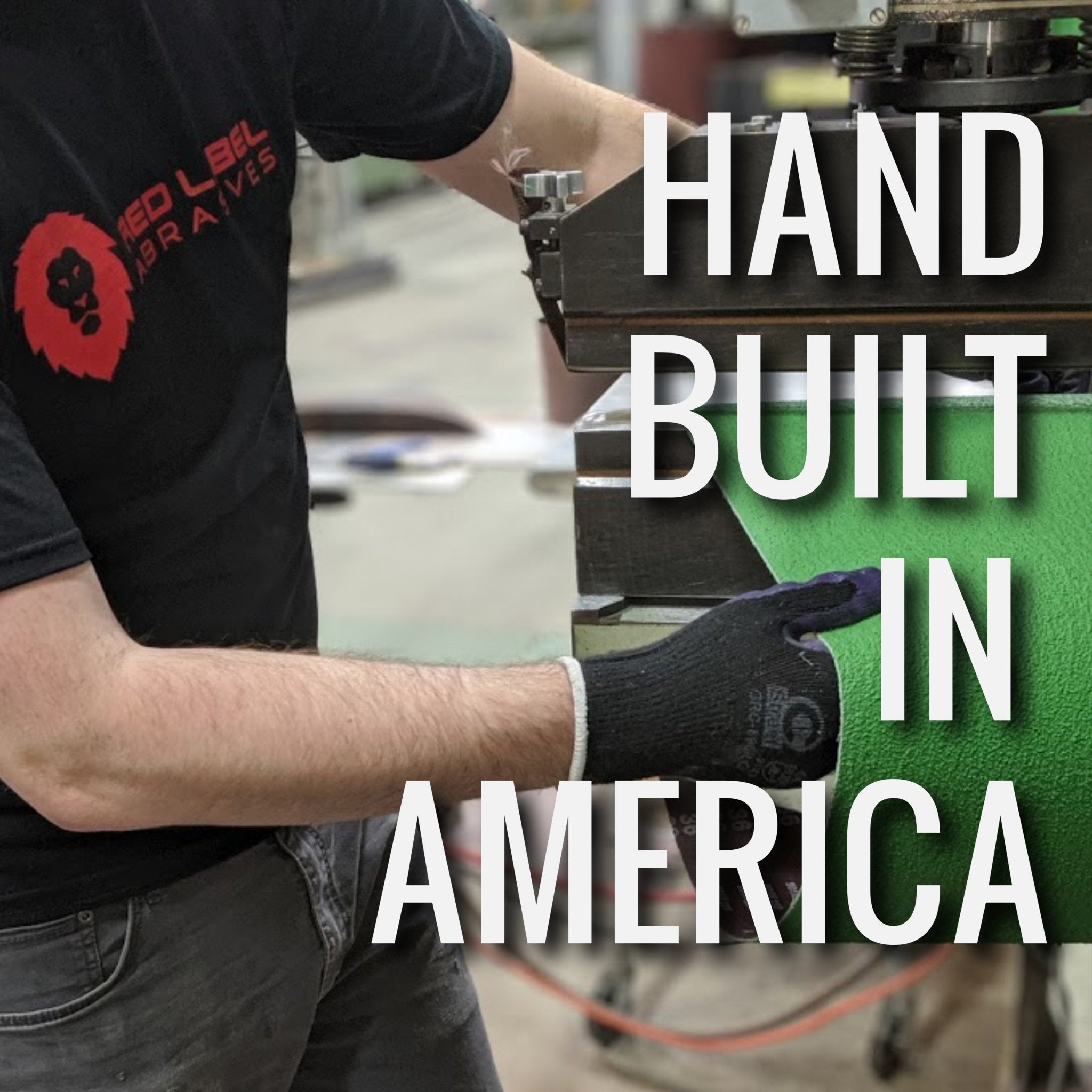Your Cart is Empty
Free Shipping over $150 (Excludes Oversized Products)
Free Shipping over $150 (Excludes Oversized Products)
Sanding Belts
Sanding Discs

How to Choose the Right Backing for Your Abrasives
by David Kranker 4 min read

Topics Covered:
When determining the best abrasive for a particular workpiece, you need to consider the backing as well as type of grain. The right backing type will support a quality and efficient sanding job while the wrong one can produce a subpar finish and even lead to tool damage over time.
So how do you know which one is the most appropriate for your sanding project? In this blog, the abrasives specialists at Red Label Abrasives will go over the most common backing types and their recommended applications.
Cloth / Fabric Backing
Cloth / fabric-backed abrasives are typically found on belts, although some sanding discs and sheets are available in cloth. They may be made from natural woven fibers (e.g. cotton) or synthetic fibers (nylon, polyester, rayon). Like paper, they come in different weights / thicknesses and varying degrees of flexibility and sturdiness. Your weight options are:
- JF- most flexible, making it a good choice when you’re sanding more detailed surfaces and profiles.
- J- made from a durable yet flexible cloth (e.g. denim) that can produce good results on both hand and machine sanding projects.
- X- stiff and sturdy cotton that is suitable for heavy-duty machine work.
- YY- rugged polyester backing that’s strong enough to remove extra stock.
Abrasives with a more lightweight and flexible cloth backing are recommended for finishing work while those made from heavier fabrics are designed for use under high pressure, as well as for harder surfaces like metal. Unlike paper-backed abrasives, cloth or fabric backings can also be used for wet polishing.
Being more durable than paper, cloth-backed abrasives are generally more expensive, but they are worth the investment because they last longer and can be used in aggressive applications that include continual bending and flexing. The lifespan of coarse cloth or fabric abrasives can be extended further with regular cleaning. Unlike paper belts, you can wash cloth belts with soap and water to clean off resin.
Advantages of Cloth Backings
- Tear resistant
- Can be used with oil and grease
- Available in a wide variety of weights
- Can be cleaned with soap and water
Disadvantages of Cloth Backings
- More expensive than paper
Best Uses for Cloth Backings
- Hard surfaces like metal
- Applications that require a flexible abrasive that will not tear
- High stock removal
Paper Backing
Paper-backed abrasives (i.e. traditional sandpaper) are the most affordable abrasives and come in a broad range of weights, from light and flexible to thick and sturdy. The A to C weight categories are best for hand sanding and use on pressure-sensitive adhesive (PSA) or hook and loop discs while D to G are resilient enough for stroke or wide belt sanding belts.
Paper backings are the lightest and most widely used backing option. However, paper is also the weakest backing material used for coated abrasives. What paper lacks in strength it makes up for in affordability.
Paper backings are recommended for light to medium sanding jobs on surfaces such as wood, textiles, and lacquers, as it creates a good finish while generating less friction and heat. Paper is ideal for flat sanding applications and usually provides the best finish for flat sanding jobs. Nevertheless, paper backings do tear easily and are less suitable for more rigorous use. In addition, paper is not compatible with wet applications unless it has been specially treated.
Advantages of Paper Backings
- Available in a variety of thicknesses and weights
- Generates minimal friction and heat
- Often the cheapest option
- Provides a smooth finish
Disadvantages of Paper Backings
- Cannot be used for wet applications unless treated
- Rips and tears easily
Best Uses for Paper Backings
- Weights A through C are good for hand sanding and not suitable for belt/machine sanding
- Weights D through G are best suited for belt/machine sanding
- Paper is best utilized for medium sanding applications like wood, lacquers, cork, and textiles
Film Backing
Film is a more recent development in coated abrasive production. Film backings are produced with a uniformly thick plastic sheet. They sit between paper and cloth abrasives and are often considered the best of both worlds. Plastic is not likely to tear and is also light enough to mold to precision shapes. Film backings are also waterproof and can be used for wet sanding applications. Film is well-suited for auto work where there are many contours and a need for fine polishing.
Advantages of Film Backings
- Lasts longer than paper
- Tear resistant
- Flexible enough to match contours
- Waterproof
Disadvantages of Film Backings
- More expensive than paper
Best Uses for Film Backings
- Metal and automotive work
- Wet sanding
- Sanding complex contours and shapes
Foam
Foam-backed abrasives are an excellent option when you’re hand-sanding workpieces with an unusual shape or intricate profile. They are waterproof and can be washed and reused, so they have a long working life. While foam backing is not suitable for leveling work, it delivers a great finish.
Advantages of Foam Backings
- Flexible enough to match complex contours and curves
- Waterproof
Disadvantages of Foam Backings
- Not good for leveling
Best Uses for Foam Backings
- Hand sanding
- Finishing applications
- Sanding complex contours and curves
- Sanding in tight spaces
Contact an Abrasive Specialist
When purchasing abrasives, always consider the application. Some backing materials are available only in certain formats while others can be bought as sheets, discs, and belts. Other considerations include whether you will be rough sanding or finishing, whether the surface is flat or contoured, and whether wet or dry sanding will be involved.
At Red Label Abrasives, we have paper, cloth, film and foam-backed abrasives available with various grit types. Our abrasive technicians can help you make the right selection based on your project needs, so that the results exceed expectations. Please visit our online store to check out our current inventory and if you have questions about placing an order or selecting the right abrasive for your needs, please call 844-824-1956 or fill out a contact form. ABOUT THE AUTHOR
David Kranker is a writer and creative maker who has been covering the abrasive industry on the Red Label Abrasives Blog since 2020. David spends his time continually researching sanding techniques to provide readers with the latest and greatest information. In his free time, David utilizes abrasives for many different home and auto projects at his home in Delton, MI.
Our Most Popular Abrasives

EdgeCore Ceramic Sanding Belts

EdgeCore Ceramic Flap Discs

Buffing Kit
Shop By Product Category





Why Choose Red Label?







